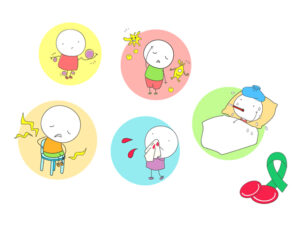
MAHAK Supports 17,358 Blood-Cancer Children over the Past 30 Years
- 28 February 22
- 109 revirew
- 0 comment
 According to World Health Organization (WHO), Acute Lymphocytic Leukemia (ALL) which is also known as blood cancer is one of the most common cancers in children and if diagnosed early, its cure rate will increase significantly. As more people in the society become aware of the symptoms of this disease, its detection will be on right time and accordingly, the treatment will be more effective, less costly and less painful. On the occasion of International Week for Children with Leukemia, we had an interview with the Medical Deputy of MAHAK regarding the symptoms and information related to this disease.
According to World Health Organization (WHO), Acute Lymphocytic Leukemia (ALL) which is also known as blood cancer is one of the most common cancers in children and if diagnosed early, its cure rate will increase significantly. As more people in the society become aware of the symptoms of this disease, its detection will be on right time and accordingly, the treatment will be more effective, less costly and less painful. On the occasion of International Week for Children with Leukemia, we had an interview with the Medical Deputy of MAHAK regarding the symptoms and information related to this disease.
Dr. Alireza Daneshgar addressed the child-related groups that they should pay attention to the signs and symptoms of this disease as the most important step in its diagnosis. He said: “Paleness, weakness, lethargy, frequent infections, fever, easy bruising, bleeding that is hard to stop, and pain in the bones and joints are the symptoms which are seen in children with leukemia. It should be noted that these symptoms do not necessarily mean that a child has cancer; however, the parents should refer to a physician as soon as they notice any of them.
Regarding the importance of periodic check-ups and tests for children, he added: “according to the child’s age, the time intervals between check-ups are different. New born and infants should be checked once a month during their first year of life; and it will be reduced to every two months in the second year and every three months in the third year. After that, check-ups should be done once or twice in year. It should be noted that diagnostic tests have no specific time and it will be done based on physician’s prescription.”
He mentioned the other common cancers in children which are Wilm’s tumors, Retinoblastoma, Low-grade Glioma, Hodgkin Lymphoma, Non-Hodgkin Lymphoma and added: “The importance of these check-ups and tests becomes even greater when we know that sometimes cancer affects the body asymptomatically so, it is only diagnozable through routine check-ups and medical examinations or with the disease progression.”
On the subject of heredity of blood cancer in children and as a conclusion, Dr. Daneshgari said, “if family members are challenging with variety of cancers, children are more likely to get cancer; however, there are currently no accurate diagnostic tests to predict it. Besides genetic factors and family roots, malnutrition, unhealthy drinking water and polluted air can all contribute to cancer in children. So, it is more important to adhere to periodic check-ups if there is a family history of cancer.”
